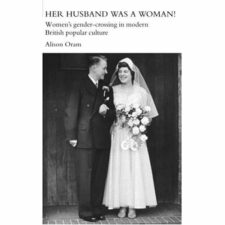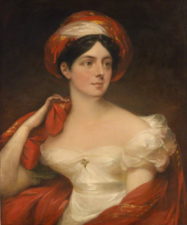13 March. On this day in 1930 Naomi Jacob published one of her many popular novels, The Beloved Physician, whose doctor-protagonist is female. She dedicated it to Ethel Bentham, a friend, a doctor, and a fellow member of the Labour Party. This was the year in which Dr Bentham changed the course of Jacob’s life by advising her to pull out of a campaign to get herself elected and instead to go abroad for her health (she had survived tuberculosis). She thereupon moved to Italy, which became her home or her base of operations for the rest of her life.
Women doctors were unusual enough in 1930 to make a potential reader expect, especially in view of Jacob’s history as an active suffragist (a delegate, for instance, to the first conference of the Women’s Social and Political Union), that this novel would address the issues confronting women trespassing into the medical profession.
But The Beloved Physician devotes more attention to its protagonist’s love-life than to her profession. In this it is typical of its author, whose writings, though opinionated, are always conventional and never politically committed. Naomi Jacob is a figure who conforms to nobody’s expectations. Her life reminds us that it is vain to generalise from any individual case.
Jacob was a lesbian and a cross-dresser. She never used her given name, but answered variously to Micky or Jacob or Jake. She wore men’s clothes; her future biographer mistook her, on first sight, for J. B. Priestley. She boasted (to friends but never in print) that she had served under fire on a destroyer during the second world war, without any of her shipmates suspecting that she was a woman. She once got married, but this proved a temporary aberration: the marriage was over within weeks and her husband’s name is not recorded. She nevertheless later considered getting married again, though she thought better of it, and her various memoirs airily enumerate the various men who wanted to marry her (oddities all of them). Her first lover, the variety actress Marguerite Broadfoote, took her on as secretary and personal assistant. After her move to Italy she generally lived as part of a female menage à trois.
Yet romantic (heterosexual) love and marriage are an unquestioned staple of her fiction. There are no lesbians in her writings and she has not been claimed as a lesbian foremother.
Her masculine persona was not unlike that of Priestley: a no-nonsense, Yorkshire non-intellectual. Her first and most important memoir, Me: A Chronicle about Other People, 1933, spends pages singing the praises of Yorkshire food, Yorkshire fowk, and Yorkshire jokes. She takes the county of her birth to be special, and she enthusiastically identifies herself with it.
Jacob’s mother was Yorkshire; her father was Jewish, having arrived in England as a child immigrant. The marriage was unhappy, and Naomi (or rather Micky) loved her mother and hated her father. But she loved and revered her gentle paternal grandfather (a self-made tailor who reverted to Yiddish in moments of emotion) as much as she loved and admired her tough maternal grandfather (a publican who drank and gambled and was a force in local politics). The only thing the grandfathers had in common was that each in his way was a die-hard Tory.
Jacob, who worships Yorkshire, often sounds positively anti-semitic in her horror of Jews who exchange their Jewish identity for an English one. In life (on a political platform, for instance) she would courageously face down anti-semitic personal attacks. Yet the hero of her very first novel, Jacob Ussher, 1925, having risen from poverty to wealth through his own efforts, “gets a twisted satisfaction” (in the words of Orlando: Women’s Writing in the British Isles from the Beginnings to the Present) “from giving to Christian causes (purely to annoy his fellow Jews) . . . . Through acts of spite he makes a name for himself as a broad?minded philanthropist.”
Of course, seeking to raise the status of any oppressed group by means of idealised fictional portraits is generally naive and can be counter-productive. Jacob has nothing in common either with portrayers of noble Jews like Charlotte Montefiore in the 1840s or George Eliot in the 1870s, or with those insiders in Anglo-Jewish society who have depicted it warts and all, from Amy Levy to Bernice Rubens.
Jacob returns repeatedly to the subject of trying to be both Jewish and English, yet any one of her descriptive passages seems to apply to either a stereotypically ultra-Jewish or a stereotypically ultra-English personality, even if the same character may receive both descriptions at different times. Her multi-volume saga of the Gollantz family, from That Wild Lie — , 1930, to Gollantz and Partners, 1958, presents this archetypal Jewish dynasty as threaded by a strain of “curious . . . hatred of Jews.” The saga opens with Emmanuel Gollantz the elder moving from Vienna to London in the nineteenth century and remaking himself as “a rich English gentleman art dealer,” although he has been warned that Englishmen in general dislike and fear Jews, especially “the Jew who is ashamed of being a Jew.”
The series ends with Emmanuel the younger (who is now old) delivering the speech about curious hatred. But characters in the novels are shaped not by pressures of this kind but by melodramatic incidents like the early, accidental death of Emmanuel the younger’s twin brother. Jacob’s characters come to her ready-made, just like those of the charwomen and barmaids she played on stage: her biographer Paul Bailey finds her “heavily reliant on stereotypes of racial or local disposition.” How strange that such an unusual person should be so good a guide to the most clichéd assumptions of her age!
All information here is from Orlando, an electronic resource published by Cambridge University Press, by subscription, at http://orlando.cambridge.org.

